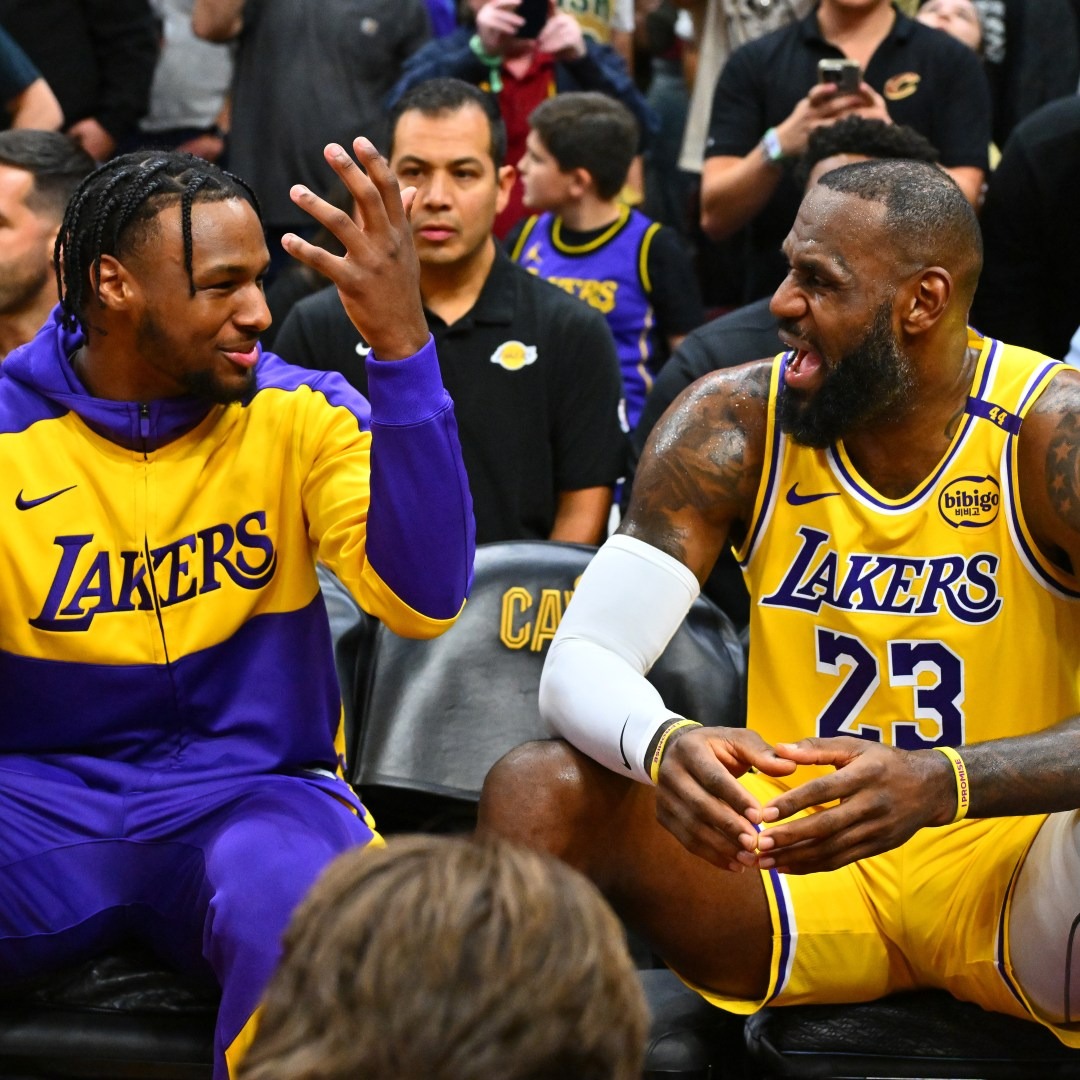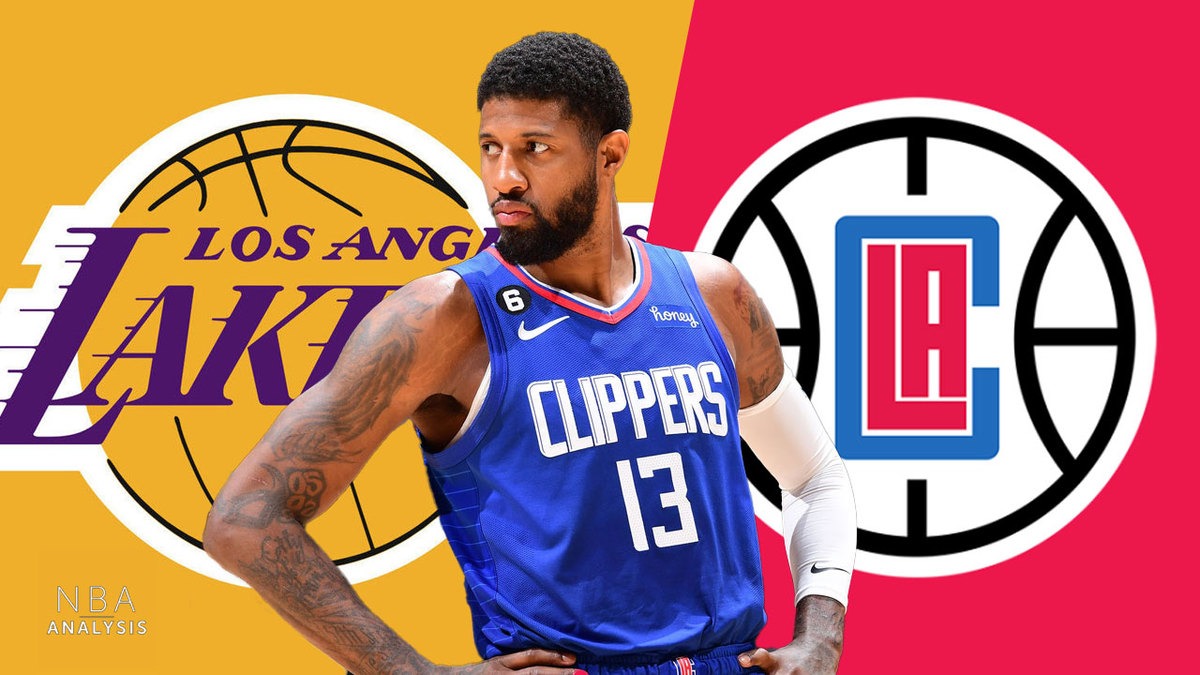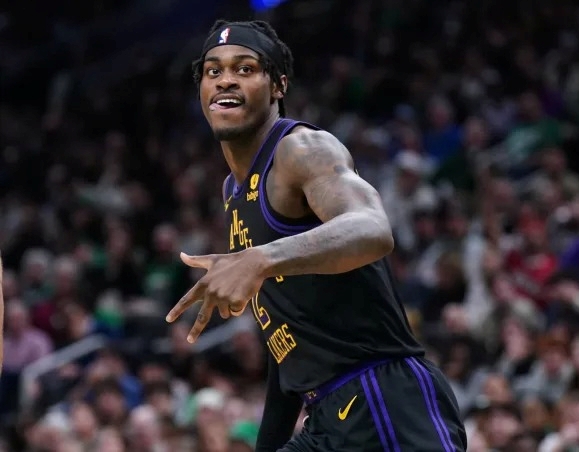Could Paul George transform the Lakers into title contenders, or would his injuries and contract become a costly gamble?

The idea of Paul George donning a Los Angeles Lakers jersey has stirred up plenty of debate among NBA fans and analysts. ClutchPoints writer Anthony Irwin recently floated a blockbuster trade scenario that would send George to the Lakers in exchange for a package centered around key rotational players and future draft picks. While the trade could theoretically bolster the Lakers’ championship aspirations, the proposed deal raises as many questions as it answers.
Lakers Receive: Paul George
Sixers Receive: D’Angelo Russell, Rui Hachimura, Gabe Vincent, Jaxson Hayes or Cam Reddish, 2 First Round Picks (2029 and 2031)
The trade package Irwin outlined includes D’Angelo Russell, Rui Hachimura, Gabe Vincent, and either Jaxson Hayes or Cam Reddish, along with two future first-round picks (2029 and 2031) and possibly a few second-rounders or pick swaps. Some variations even suggest the inclusion of young players like Dalton Knecht or Austin Reaves, which would likely sweeten the pot for the Philadelphia 76ers.
For the Sixers, who have struggled to a dismal 3-12 start this season, this trade represents an opportunity to pivot toward rebuilding. Joel Embiid, Tyrese Maxey, and Paul George have struggled to find synergy amid injuries and internal dysfunction. If the Sixers were to blow it up, moving George for younger assets and picks might make sense.

From a basketball perspective, adding Paul George could address several of the Lakers’ needs. George is a versatile wing player who excels in catch-and-shoot situations, ball-handling, and defense. His skill set complements LeBron James and Anthony Davis, potentially giving the Lakers a formidable trio capable of competing with the best in the Western Conference.
However, acquiring George comes with significant risks. The biggest concern is his injury history. Over the years, George has missed substantial time due to various ailments, including shoulder and leg injuries. For a Lakers team already dealing with the fragility of its stars, adding another injury-prone player might be a recipe for disaster.
While George has the talent to be a significant asset, his current form leaves much to be desired. This season, he has played in only 8 of the 76ers’ 15 games, averaging 14.9 points, 5.4 rebounds, and 4.8 assists per game. His shooting splits of 38.3% from the field and 27.8% from beyond the arc are well below his career averages.
These numbers raise questions about whether George, now 34 years old, is still capable of playing at an elite level or if he is entering the twilight of his career.
Furthermore, George’s massive $49.2 million contract this season—and a potential extension—would limit the Lakers’ financial flexibility. Trading away multiple players and future draft capital could leave the Lakers with a top-heavy roster and little room to maneuver in the coming years.
Fans have also expressed skepticism about George’s ability to deliver in high-stakes moments. His past postseason performances have been inconsistent, with some memorable struggles earning him the nickname “Pandemic P.” Many Lakers fans, wary of another Westbrook-like situation, are hesitant to bet their team’s future on a player with a checkered track record.
Unsurprisingly, Lakers fans have been divided on the trade proposal. A Twitter poll conducted by Irwin showed that 55.3% of fans opposed the trade, while 44.7% supported it. The reactions highlighted a mix of frustration, skepticism, and cautious optimism.
One fan put it bluntly, saying, “This would be worse than the Westbrook trade by a wide margin.”
Another added, “PG is overrated, injury-prone, and already on the decline. To top it off, he never takes accountability. Laker fans will hate him real quick.”
However, not everyone was entirely against the idea. A different fan remarked, “I like PG, but his contract is too much money, and he’s too injury-prone.”
Another chimed in with, “He’s older and inconsistent, but he’d be a solid third option if healthy.”
Making the trade work under the NBA’s current collective bargaining agreement (CBA) would be complicated. Both the Lakers and Sixers are close to the second salary cap apron, which imposes strict financial limitations. The trade would need to be nearly dollar-for-dollar, leaving little wiggle room for either team to fill roster spots left vacant by outgoing players.
Additionally, other teams with more draft capital or better young assets could outbid the Lakers if George became available. The Lakers’ ability to land George hinges not only on their willingness to part with key players and picks but also on the competition from other suitors.
While the idea of Paul George in a Lakers uniform is intriguing, the risks far outweigh the potential rewards. His poor shooting percentages this season, combined with his injury history and hefty contract, make him a questionable fit for a team aiming to maximize its championship window. Fans’ skepticism, reflected in the poll results and online reactions, underscores the uncertainty surrounding George’s ability to elevate the Lakers.
Ultimately, unless the 76ers are willing to part with George at a bargain price, the Lakers might be better off exploring other options to strengthen their roster. Trading for a star is always tempting, but in this case, it might be wiser for the Lakers to prioritize depth, durability, and long-term flexibility over a gamble on George’s fading star power.




